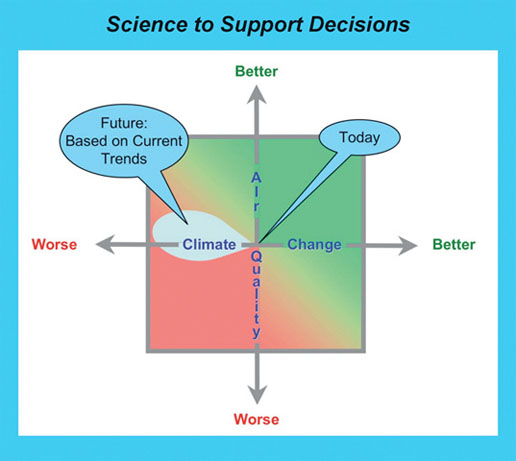
Schematic diagram of the trade-offs between the implications for regional air quality and global climate change of new policies for management of the atmosphere. The gray ellipse approximately represents the direction of current trends in the U.S.
The lowdown on CalNex
By Jane Palmer
CalNex 2010 is a major climate and air-quality study carried out in California by NOAA, the California Air Resources Board and numerous academic researchers including several CIRES scientists. “This was the biggest study looking at the intersection of air quality and climate so far,” said CIRES Fellow Jose-Luis Jimenez. “For that reason, it was able to pull together a very large coalition of people who wanted to collaborate and a lot of resources.”
In spring 2010, the researchers scrutinized the air over and around California by air, by ship and on ground sites at Bakersfield and Pasadena. Scientists will analyze and interpret this data over the next few
years. Their scientific goals include understanding the origins of pollutants and greenhouse gases and the transport, reactions and eventual fates of those particles and gases.
CalNex will help decision makers understand the complicated interactions of air quality and
climate—because policies to address one are likely to influence the other, as well. And the information gleaned should also prove useful for understanding air quality and climate in other cities and similar regions.


